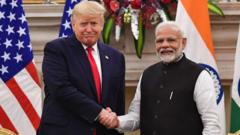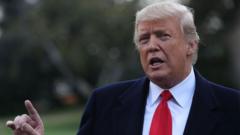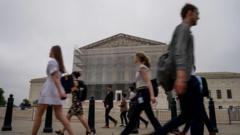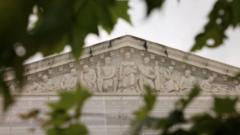The Trump administration is confronting opposition from a coalition of Democratic attorneys general who argue that the newly imposed tariffs exceed presidential authority. The lawsuit contends that the widespread import duties were enacted without appropriate congressional approval. However, the administration highlights that Trump's actions align with established laws such as the Trade Expansion Act of 1962, which grants the president flexibility in trade matters related to national security and economic interests.
Trump's Tariff Program Faces Legal Pushback but Shows Early Economic Promises
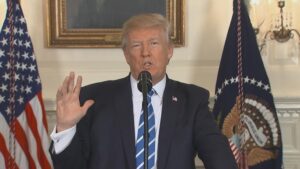
Trump's Tariff Program Faces Legal Pushback but Shows Early Economic Promises
A new legal challenge from Democratic state attorneys general is testing President Trump's ambitious tariff program aimed at reshaping trade practices, yet historical context suggests potential gains for American workers.
While opponents express concerns about the implications of tariffs, historical evidence suggests they can serve as a robust economic strategy. The U.S. relied heavily on tariffs in the past, enabling leaders like Abraham Lincoln and Theodore Roosevelt to support domestic industry growth while protecting American jobs from foreign competition. Early signs indicate that Trump's latest initiative, termed the “Liberation Day Tariffs,” is prompting manufacturers to bring production back to the U.S. to avoid rising import costs.
The Trump administration's stance advocates that fair trade is a fundamental aspect of free trade. The tariffs aim to rectify decades of perceived manipulation in global trade by countries like China and Vietnam. Over 130 nations have initiated discussions with U.S. trade officials regarding lowering tariff rates, illustrating that assertive negotiation can achieve quicker results than prolonged discussions.
Despite the ongoing legal battles initiated by Democratic states, President Trump’s tariff approach draws from historical precedents and economic rationale. Rather than being deemed reckless, his "reciprocal tariff" strategy seeks to revive the manufacturing dominance that once distinguished the American economy. With factories reopening and negotiations taking place with global partners, early indicators reflect a positive response to Trump's tariffs.
The Trump administration's stance advocates that fair trade is a fundamental aspect of free trade. The tariffs aim to rectify decades of perceived manipulation in global trade by countries like China and Vietnam. Over 130 nations have initiated discussions with U.S. trade officials regarding lowering tariff rates, illustrating that assertive negotiation can achieve quicker results than prolonged discussions.
Despite the ongoing legal battles initiated by Democratic states, President Trump’s tariff approach draws from historical precedents and economic rationale. Rather than being deemed reckless, his "reciprocal tariff" strategy seeks to revive the manufacturing dominance that once distinguished the American economy. With factories reopening and negotiations taking place with global partners, early indicators reflect a positive response to Trump's tariffs.


